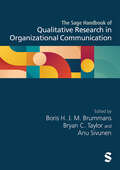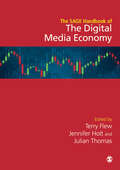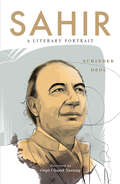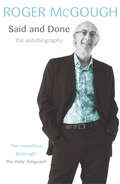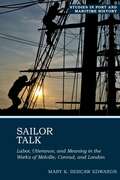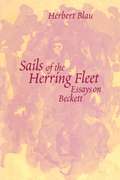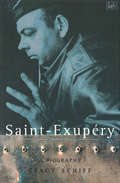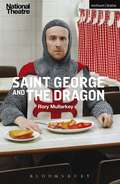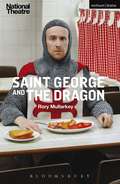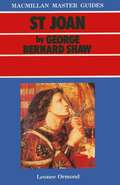- Table View
- List View
The Sage Handbook of Qualitative Research in Organizational Communication
The Sage Handbook of Qualitative Research in Organizational Communication is a state-of-the-art resource for scholars, students, and practitioners seeking to deepen their understanding and expertise in this dynamic field. Written by a global team of established and emerging experts, this Handbook provides a comprehensive exploration of the field’s foundational traditions of epistemology and theory, as well as its latest methodologies, methods, issues, and debates. The volume reflects a diverse range of approaches (e.g., mixed-methods, ethnographic, rhetorical, pragmatist, phenomenological, feminist, critical race, postcolonial, queer, and engaged), and covers a broad spectrum of topics ranging from data collection and analysis, to representation. Additionally, this Handbook addresses emerging trends such as digital forensics, post-qualitative research, and the transformative impact of COVID-19 on the conduct of qualitative research in organizational communication. As the first volume of its kind in this field, The Sage Handbook of Qualitative Research in Organizational Communication is a cornerstone text for scholars, students, and practitioners interested in understanding the vital role of communication in organizational life. Part 1: Approaches to Qualitative Organizational Communication Research Part 2: Data Collection in Qualitative Organizational Communication Research: Methods and Issues Part 3: Data Analysis and Representation in Qualitative Organizational Communication Research: Methods and Issues Part 4: The Future of Qualitative Organizational Communication Research
The SAGE Handbook of the Digital Media Economy
by Julian Thomas Terry Flew Jennifer HoltDebates about the digital media economy are at the heart of media and communication studies. An increasingly digitalised and datafied media environment has implications for every aspect of the field, from ownership and production, to distribution and consumption. The SAGE Handbook of the Digital Media Economy offers students, researchers and policy-makers a multidisciplinary overview of contemporary scholarship relating to the intersection of the digital economy and the media, cultural, and creative industries. It provides an overview of the major areas of debate, and conceptual and methodological frameworks, through chapters written by leading scholars from a range of disciplinary perspective. PART 1: Key Concepts PART 2: Methodological Approaches PART 3: Media Industries of the Digital Economy PART 4: Geographies of the Digital Economy PART 5: Law, Governance and Policy
The SAGE Handbook of the Digital Media Economy
by Julian Thomas Terry Flew Jennifer HoltDebates about the digital media economy are at the heart of media and communication studies. An increasingly digitalised and datafied media environment has implications for every aspect of the field, from ownership and production, to distribution and consumption. The SAGE Handbook of the Digital Media Economy offers students, researchers and policy-makers a multidisciplinary overview of contemporary scholarship relating to the intersection of the digital economy and the media, cultural, and creative industries. It provides an overview of the major areas of debate, and conceptual and methodological frameworks, through chapters written by leading scholars from a range of disciplinary perspective. PART 1: Key Concepts PART 2: Methodological Approaches PART 3: Media Industries of the Digital Economy PART 4: Geographies of the Digital Economy PART 5: Law, Governance and Policy
The SAGE Handbook of the Digital Media Economy
Debates about the digital media economy are at the heart of media and communication studies. An increasingly digitalised and datafied media environment has implications for every aspect of the field, from ownership and production, to distribution and consumption. The SAGE Handbook of the Digital Media Economy offers students, researchers and policy-makers a multidisciplinary overview of contemporary scholarship relating to the intersection of the digital economy and the media, cultural, and creative industries. It provides an overview of the major areas of debate, and conceptual and methodological frameworks, through chapters written by leading scholars from a range of disciplinary perspective. PART 1: Key Concepts PART 2: Methodological Approaches PART 3: Media Industries of the Digital Economy PART 4: Geographies of the Digital Economy PART 5: Law, Governance and Policy
The SAGE Handbook of Writing Development (PDF)
by Dr Jeni Riley Dr Martin Nystrand Professor Debra Myhill Roger BeardWriting development is currently the focus of substantial international debate because it is the aspect of literacy education that has been least responsive to central government and state reforms. Teaching approaches in writing have been slower to change than those in teaching reading and pupil attainment in writing has increased at a much more modest rate than pupil attainment in reading. This handbook critically examines research and theoretical issues that impact on writing development from the early years through to adulthood. It provides those researching or teaching literacy with one of the most academically authoritative and comprehensive works in the field. With expert contributors from across the world, the book represents a detailed and valuable overview of a complex area of study.
The Sage in Harlem: H. L. Mencken and the Black Writers of the 1920s
by Charles ScruggsThe Sage in Harlem establishes H. L. Mencken as a catalyst for the blossoming of black literary culture in the 1920s and chronicles the intensely productive exchange of ideas between Mencken and two generations of black writers: the Old Guard who pioneered the Harlem Renaissance and the Young Wits who sought to reshape it a decade later. From his readings of unpublished letters and articles from black publications of the time, Charles Scruggs argues that black writers saw usefulness in Mencken's critique of American culture, his advocacy of literary realism, and his satire of America. They understood that realism could free them from the pernicious stereotypes that had hounded past efforts at honest portraiture, and that satire could be the means whereby the white man might be paid back in his own coin. Scruggs contends that the content of Mencken's observations, whether ludicrously narrow or dazzlingly astute, was of secondary importance to the Harlem intellectuals. It was the honesty, precision, and fearlessness of his expression that proved irresistible to a generation of artists desperate to be taken seriously. The writers of the Harlem Renaissance turned to Mencken as an uncompromising—and uncondescending—commentator whose criticisms were informed by deep interest in African American life but guided by the same standards he applied to all literature, whatever its source. The Sage in Harlem demonstrates how Mencken, through the example of his own work, his power as editor of the American Mercury, and his dedication to literary quality, was able to nurture the developing talents of black authors from James Weldon Johnson to Richard Wright.
The Sage in Harlem: H. L. Mencken and the Black Writers of the 1920s
by Charles ScruggsThe Sage in Harlem establishes H. L. Mencken as a catalyst for the blossoming of black literary culture in the 1920s and chronicles the intensely productive exchange of ideas between Mencken and two generations of black writers: the Old Guard who pioneered the Harlem Renaissance and the Young Wits who sought to reshape it a decade later. From his readings of unpublished letters and articles from black publications of the time, Charles Scruggs argues that black writers saw usefulness in Mencken's critique of American culture, his advocacy of literary realism, and his satire of America. They understood that realism could free them from the pernicious stereotypes that had hounded past efforts at honest portraiture, and that satire could be the means whereby the white man might be paid back in his own coin. Scruggs contends that the content of Mencken's observations, whether ludicrously narrow or dazzlingly astute, was of secondary importance to the Harlem intellectuals. It was the honesty, precision, and fearlessness of his expression that proved irresistible to a generation of artists desperate to be taken seriously. The writers of the Harlem Renaissance turned to Mencken as an uncompromising—and uncondescending—commentator whose criticisms were informed by deep interest in African American life but guided by the same standards he applied to all literature, whatever its source. The Sage in Harlem demonstrates how Mencken, through the example of his own work, his power as editor of the American Mercury, and his dedication to literary quality, was able to nurture the developing talents of black authors from James Weldon Johnson to Richard Wright.
Sahir: A Literary Portrait
by Surinder DeolSahir Ludhianvi (1921–1980), a remarkable film lyricist, was also an iconic literary poet. Surinder Deol paints a sensitive portrait that reveals an artist who was aware of the depth of his poetic message as well as of his ability to present it in words that captured the reader’s imagination. Sahir looked outward at the world to find beauty in nature for inspiration while at the same time raising his voice against poverty, deprivation, and the denial of social justice. The book contains free verse translation of over ninety of Sahir’s literary creations, including poems, ghazals, bhajans, and a long peace poem called Parchhaaiyaan (The Shadows). The author strives to bring together four distinct elements of Sahir’s work that make him one of the most loved poets of our generation: his deep-rooted love of nature, his snug romanticism, his sensitivity to human suffering, and his unceasing optimism for a better tomorrow.
Said And Done
by Roger McGoughRoger McGough is one of Britain's best-loved poets, and something of a national institution. His name is ubiquitous with matter-of-fact Scouse humour, easy-going charm, and perfect observations of the idiosyncrasies of everyday life, whether you know him from his poetry, or from his regular broadcasts on television or radio. Roger first rose to prominence in the 1960s as a member of the pop group The Scaffold, who had two number one hits - Thank U Very Much and Lily The Pink. He began his poetry career performing with The Grimms, alongside fellow Liverpool poets Adrian Henri and Brian Patten, with whom he went on to publish The Mersey Sound, which remains the biggest-selling British poetry book ever.This is his autobiography - and like the best of his poetry it is packed full of hilarious observations, unbelievable stories, nostalgic reminiscences and bittersweet tales of love, life and loss. From his memories of growing up in Liverpool, playing in bombed out houses as a young boy, to the skiffle-crazed days of his adolescence, through to his time at university - and his meetings there with Larkin. He explores his sudden, almost overnight fame and success with Mike McCartney et all in The Scaffold, as well as his time working with George Martin, and co-writing the Yellow Submarine film script for the Beatles, through his international touring days, to the present. He certainly has many a story to tell about meeting some fascinating characters: Bob Dylan, John Lennon, Marlon Brando, Alan Ginsberg, Pete McCarthy and Salman Rushdie all appear amongst others, but it's his sheer story-telling nous, and his gift for observing the minutia of everyday life, and to completely capture a moment in time which sets this apart from other books. His life story is one that will be universally identifiable to those who grew up with him - who embraced the verve and irreverence of the sixties, only to end up as slightly embittered romantic cynics. This is done here in the most funny, poignant, bittersweet, and melancholic autobiography you will read this year - a man whose hugely popular take on it all resonates with honesty and humour.
A Said Dictionary
by R. RadhakrishnanThis interpretive dictionary introduces the critical and theoretical world of distinguished literary and cultural critic Edward W. Said through the crucial terms and concepts central to his work. Compares and contrasts Said's perspective with other key theorists, such as Derrida, Spivak, Foucault, and Jameson Describes the crucial terms and concepts central to Said's work Places the development of Said's work within its historical context
A Said Dictionary
by R. RadhakrishnanThis interpretive dictionary introduces the critical and theoretical world of distinguished literary and cultural critic Edward W. Said through the crucial terms and concepts central to his work. Compares and contrasts Said's perspective with other key theorists, such as Derrida, Spivak, Foucault, and Jameson Describes the crucial terms and concepts central to Said's work Places the development of Said's work within its historical context
Sailor Talk: Labor, Utterance, and Meaning in the Works of Melville, Conrad, and London (Studies in Port and Maritime History #1)
by Mary Bercaw EdwardsThis book investigates the highly engaging topic of the literary and cultural significance of ‘sailor talk.’ The central argument is that sailor talk offers a way of rethinking the figure of the nineteenth-century sailor and sailor-writer, whose language articulated the rich, layered, and complex culture of sailors in port and at sea. From this argument many other compelling threads emerge, including questions relating to the seafarer’s multifaceted identity, maritime labor, questions of performativity, the ship as ‘theater,’ the varied and multiple registers of ‘sailor talk,’ and the foundational role of maritime language in the lives and works of Herman Melville, Joseph Conrad, and Jack London. The book also includes nods to James Fenimore Cooper, Rudyard Kipling, and Robert Louis Stevenson. Meticulous scholarly research underpins the close readings of literary texts and the scrupulously detailed biographical accounts of three major sailor-writers. The author’s own lived experience as a seafarer adds a refreshingly materialist dimension to the subtle literary readings. The book represents a valuable addition to a growing scholarly and political interest in the sea and sea literature. By taking the sailor’s viewpoint and listening to sailors’ voices, the book also marks a clear intervention in this developing field.
Sails of the Herring Fleet: Essays on Beckett (Theater: Theory/Text/Performance)
by Herbert BlauSails of the Herring Fleet traces esteemed director and theorist Herbert Blau's encounters with the work of Samuel Beckett. Blau directed Beckett's plays when they were still virtually unknown, and for more than four decades has remained one of the leading interpreters of his work. In addition to now-classic essays, the collection includes early program notes and two remarkable interviews -- one from Blau's experience directing Waiting for Godot at San Quentin prison, and one from his last visit with Beckett, just before the playwright's death. Herbert Blau is Byron W. and Alice L. Lockwood Professor of the Humanities, University of Washington.
The Saint and Artist: A Study Of The Fiction Of Iris Murdoch
by Peter J. ConradiPublished to coincide with his major biography of Iris Murdoch, Peter Conradi’s acclaimed critical appreciation of her work is reissued in a fully revised and updated edition, with a foreword by John Bayley.
Saint-Evremond: A Voice from Exile - Unpublished Letters to Madame De Gouville and the Abbe De Hautefeuille 1697-1701
by Denys Potts"The celebrated French critic and thinker Charles de Saint-Evremond (1614-1703) spent much of his life in exile in London, where he wrote most of his major works. The letters in the present collection, long thought to have been lost, were rescued from obscurity by Denys Potts, and are published here for the first time. Written to Madame de Gouville, whose friendship he happily rediscovered in his declining years, and to the Abbe de Hautefeuille, secretary to the Duchesse de Bouillon, the two series of interwoven letters form a single narrative which, for sheer spontaneity and verve, is matched only by the letters of Madame de Sevigne. This edition represents the largest single discovery of Saint-Evremond letters, and includes many that were previously inaccessible in private collections."
Saint-Evremond: A Voice from Exile - Unpublished Letters to Madame De Gouville and the Abbe De Hautefeuille 1697-1701
by Denys Potts"The celebrated French critic and thinker Charles de Saint-Evremond (1614-1703) spent much of his life in exile in London, where he wrote most of his major works. The letters in the present collection, long thought to have been lost, were rescued from obscurity by Denys Potts, and are published here for the first time. Written to Madame de Gouville, whose friendship he happily rediscovered in his declining years, and to the Abbe de Hautefeuille, secretary to the Duchesse de Bouillon, the two series of interwoven letters form a single narrative which, for sheer spontaneity and verve, is matched only by the letters of Madame de Sevigne. This edition represents the largest single discovery of Saint-Evremond letters, and includes many that were previously inaccessible in private collections."
Saint-Exupery: A Biography
by Stacy SchiffA fascinating account of the life of one of the century's great eccentrics - the brilliant Antoine de Saint-Exupery. Born in 1900 of impoverished aristocracy, he swiftly developed a mania for aviation, despite his chaotic mind and total technological incompetence. He flew reconnaissance missions in the War and wrote some strange and wonderful books, including the classic children's story THE LITTLE PRINCE, between theatrically executed airplane crashed. He died in the air in 1944, and his brief life instantly acquired mythical status. 'Every facet of Saint-Exupery's short and dramatic life is covered in this fascinating biography. This is Stacy Schiff's first book, but she writes with all the skill, assurance and mastery of an old literary hand. If there was such a thing as a prize for a first biography, I would nominate this book. ' Frank McLynn, SUNDAY TELEGRAPH.
Saint George and the Dragon (Modern Plays)
by Rory MullarkeyA village. A dragon. A damsel in distress.Into the story walks George: wandering knight, freedom fighter, enemy of tyrants the world over. One epic battle later and a nation is born.As the village grows into a town, and the town into a city, the myth of Saint George which once brought a people together, threatens to divide them.
Saint George and the Dragon (Modern Plays)
by Rory MullarkeyA village. A dragon. A damsel in distress.Into the story walks George: wandering knight, freedom fighter, enemy of tyrants the world over. One epic battle later and a nation is born.As the village grows into a town, and the town into a city, the myth of Saint George which once brought a people together, threatens to divide them.
Saint Margaret, Queen of the Scots: A Life in Perspective (The New Middle Ages)
by C. KeeneMargaret, saint and 11th-century Queen of the Scots, remains an often-cited yet little-understood historical figure. Keene's analysis of sources in terms of both time and place – including her Life of Saint Margaret , translated for the first time – allows for an informed understanding of the forces that shaped this captivating woman.
Saint Perpetua across the Middle Ages: Mother, Gladiator, Saint (The New Middle Ages)
by Margaret Cotter-LynchThis study traces the genealogy of Saint Perpetua’s story with a straightforward yet previously overlooked question at its center: How was Perpetua remembered and to what uses was that memory put? One of the most popular and venerated saints from 200 CE to the thirteenth century, the story of Saint Perpetua was retold in dramatically different forms across the European Middle Ages. Her story begins in the arena at Carthage: a 22-year-old nursing mother named Vibia Perpetua was executed for being a Christian, leaving behind a self-authored account of her time in prison leading up to her martyrdom. By turns loving mother, militant gladiator, empathic young woman, or unattainable ideal, Saint Perpetua’s story ultimately helps to trace the circulation of texts and the transformations of ideals of Christian womanhood between the third and thirteenth centuries.
Saint Perpetua across the Middle Ages: Mother, Gladiator, Saint (The New Middle Ages)
by Margaret Cotter-LynchThis study traces the genealogy of Saint Perpetua’s story with a straightforward yet previously overlooked question at its center: How was Perpetua remembered and to what uses was that memory put? One of the most popular and venerated saints from 200 CE to the thirteenth century, the story of Saint Perpetua was retold in dramatically different forms across the European Middle Ages. Her story begins in the arena at Carthage: a 22-year-old nursing mother named Vibia Perpetua was executed for being a Christian, leaving behind a self-authored account of her time in prison leading up to her martyrdom. By turns loving mother, militant gladiator, empathic young woman, or unattainable ideal, Saint Perpetua’s story ultimately helps to trace the circulation of texts and the transformations of ideals of Christian womanhood between the third and thirteenth centuries.
Saint Vincent Ferrer, His World and Life: Religion and Society in Late Medieval Europe (The New Middle Ages)
by Philip DaileaderThe fourteenth and fifteenth centuries were times of tumultuous change in medieval Europe; they witnessed the Black Death, the Great Papal Schism, heightened fears of the apocalypse, and the elimination of Spain's non-Christian population. Few figures were as widely and as intimately involved in late medieval Europe's struggles as Saint Vincent Ferrer. Perhaps the foremost preacher of his day, Ferrer spent the final two decades of his life traversing Europe, preparing the world for its imminent destruction. Saint Vincent Ferrer (d. 1419), His World and Life reassesses the controversial preacher's motives, methods, and impact, tracing Ferrer's journey from obscure logician to angel of the apocalypse, as he came to be known. At the same time, the book offers new insights into the depth and breadth of late medieval apocalyptic anticipation, and into the processes that ultimately led to the expulsions of Spain's Jews and Muslims.
Saintly Women: Medieval Saints, Modern Women, and Intimate Partner Violence (Routledge Studies in Medieval Religion and Culture)
by Nancy Nienhuis Beverly Mayne KienzleThis ground-breaking volume assesses the contemporary epidemic of intimate partner violence and explores how and why cultural and religious beliefs serve to excuse battering and to work against survivors’ attempts to find safety. Theological interpretations of sacred texts have been used for centuries to justify or minimize violence against women. The authors recover historical and especially medieval narratives whose protagonists endure violence that is framed by religious texts or arguments. The medieval theological themes that redeem battering in saints’ lives—suffering, obedience, ownership and power—continue today in most religious traditions. This insightful book emphasizes Christian history and theology, but the authors signal contributions from interfaith studies to efforts against partner violence. Examining medieval attitudes and themes sharpens the readers’ understanding of contemporary violence against women. Analyzing both historical and contemporary narratives from a religious perspective grounds the unique approach of Nienhuis and Kienzle, one that forges a new path in grappling with partner violence. Medieval and contemporary narratives alike demonstrate that women in abusive relationships feel the burden of religious beliefs that enjoin wives to endure suffering and to maintain stable marriages. Religious leaders have reminded women of wives’ responsibility for obedience to husbands, even in the face of abuse. In some narratives, however, women create safe places for themselves. Moreover, some exemplary communities call upon religious belief to support their opposition to violence. Such models of historical resistance reveal precedents for response through intervention or protection.
